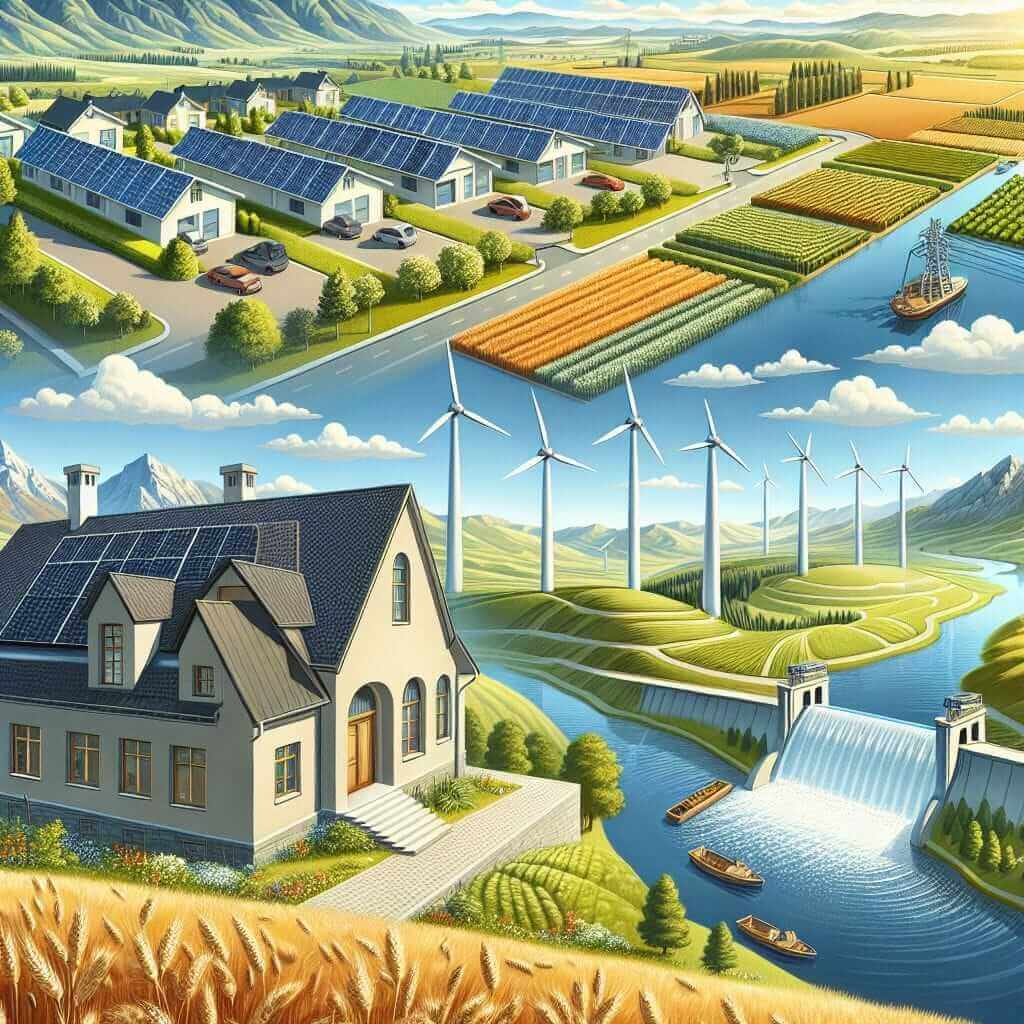The Reading section of the IELTS exam tests your ability to comprehend, interpret, and analyze written texts. This part of the test often includes topics of global relevance and current interest. A popular and recurrent theme is the integration of renewable energy into existing infrastructure. Understanding how renewable energy is being adapted into our traditional systems is not only crucial for the exam but is also timely given the global shift towards sustainable energy sources. So, let’s dive into a topic that could potentially appear in your IELTS exam: “How is renewable energy being integrated into existing infrastructure?”
Given the increasing focus on climate change and sustainability, this topic has a high likelihood of recurring in future IELTS exams. It’s been a trending subject over recent years and is expected to remain relevant.
Reading Passage and Questions
Reading Passage
Renewable Energy and Existing Infrastructure
The gradual shift from fossil fuels to renewable energy is an imperative step towards combating climate change. Various forms of renewable energy, such as solar, wind, and hydropower, are being integrated into existing infrastructure. One of the primary considerations is how to efficiently adapt current systems without causing significant disruptions or incurring excessive costs.
In urban settings, photovoltaic panels are being installed on rooftops of buildings, providing a dual benefit of generating electricity and reducing heat absorption. Moreover, wind turbines are often placed on unused land or even offshore to harness wind energy, which is then fed into the national grid. Hydroelectric plants, although requiring substantial initial investments, offer a reliable and consistent source of energy by utilizing the kinetic energy of water bodies.

Smart grids, a revolutionary component in the integration process, have been developed to better manage the electricity produced from renewable sources. These grids use advanced digital technology to control the energy flow, ensuring that any surplus energy can be stored or redistributed efficiently.
Transportation is another sector witnessing significant transformation. Electric vehicles (EVs) are becoming increasingly common, and charging stations are being integrated into existing fuel stations and parking lots. This seamless integration makes it convenient for users and promotes the shift from gasoline-powered vehicles to electric ones.
Government policies and incentives also play a crucial role in the successful integration of renewable energy. Subsidies for renewable energy projects, tax breaks for companies investing in sustainable technology, and stringent regulations against excessive carbon emissions are some measures driving this transition.
However, the transition is not without its challenges. Infrastructure upgrades, technological adjustments, and significant financial investments are required. Despite these hurdles, the long-term benefits of reduced greenhouse gas emissions, better air quality, and sustainability make the integration of renewable energy into existing infrastructure an inevitable step for a greener future.
Questions
Multiple Choice
-
What is one of the dual benefits of installing photovoltaic panels on rooftops?
A. Reducing wind absorption
B. Generating electricity and reducing heat absorption
C. Increasing fossil fuel usage
D. Reducing the need for smart grids -
How do smart grids manage the electricity produced from renewable sources?
A. By only using traditional methods
B. By utilizing advanced digital technology
C. By storing energy in fossil fuels
D. By reducing the use of EVs
True/False/Not Given
- Wind turbines are always placed offshore.
- Government policies are crucial in the transition to renewable energy.
Matching Headings
- Match the following subheadings to the correct paragraphs:
- Smart Grid Innovations
- Strategies in Urban Settings
- The Role of Government Policies
- Challenges in Transitioning
Sentence Completion
- One challenge of integrating renewable energy is ___.
- Hydroelectric plants offer a reliable and consistent source of energy by utilizing ____.
Answer Key and Explanations
- B – Photovoltaic panels generate electricity and reduce heat absorption, making them highly efficient in urban settings where both benefits are valuable.
- B – Smart grids use advanced digital technology to manage electricity flow, ensuring optimal utilization of renewable energy.
- False – Wind turbines can be placed on both unused land and offshore.
- True – Government policies such as subsidies and tax breaks are driving the transition to renewable energy.
-
- Smart Grid Innovations: Smart grids, a revolutionary component…
- Strategies in Urban Settings: In urban settings, photovoltaic panels…
- The Role of Government Policies: Government policies and incentives…
- Challenges in Transitioning: However, the transition is not without…
- significant financial investments
- the kinetic energy of water bodies
Common Mistakes and Tips
- Misinterpreting Key Details: Pay attention to specific details mentioned in the passage to avoid misunderstanding the questions.
- Not Paying Attention to Headings: Headings can help grasp the overall structure of the passage, making it easier to locate information.
- Glossing Over Important Vocabulary: Always take note of critical and recurring vocabulary words to better understand the context.
Vocabulary and Grammar Focus
Vocabulary:
- Photovoltaic (adj): /fəʊtəʊˈvɒlteɪɪk/ – relating to the conversion of light into electricity.
- Kinetic (adj): /kɪˈnetɪk/ – related to motion.
- Subsidies (n): /ˈsʌbsɪdiz/ – financial support provided by the government.
- Stringent (adj): /ˈstrɪndʒənt/ – strict or precise.
- Grid (n): /ɡrɪd/ – a network for distributing electricity.
Grammar:
- Relative Clauses: “which are then fed into the national grid” is a relative clause adding detail about wind energy.
- Adverbial Clauses: “although requiring substantial initial investments” provides a contrast within the sentence structure.
Advice for High Reading Scores in IELTS
- Practice Regularly: Regular practice with passages on diverse topics will enhance reading speed and comprehension.
- Understand the Question Types: Familiarize yourself with various question formats to quickly identify what is being asked.
- Expand Vocabulary: A robust vocabulary will aid in understanding complex texts and nuanced meanings.
- Read Widely: Engage with a wide range of reading materials, from scientific journals to news articles, to build a broad understanding of different subjects.
Consistent practice and a strategic approach can significantly boost your IELTS Reading score, making you better prepared to tackle any topic, including the integration of renewable energy.